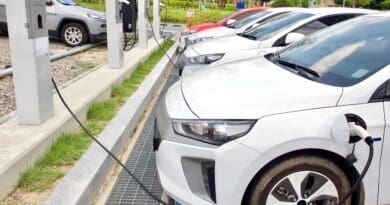
Genesis Neolun and GV60 Magma hint at brand’s electric future
Premium car maker Genesis has given a hint of what its next electric model could look like with the unveiling of the Neolun Concept.
The concept SUV was revealed at the ‘Genesis House’ ahead of the New York International Auto Show, showcasing new technology and ideas which are likely to find their way into future models.
With a name meaning ‘new moon’ the Neolun is a large luxury SUV intended to sit at the very top of the brand’s range. Among its innovative features are rear-hinged coach doors, a radiant heating system, swivelling front seats and pop-up roof rails.
The car uses a reductive design with a few simple lines, including the striking double-height lights which stretch across the front of the car and along the front wings. Its most striking feature is the coach doors, which swing wide and come with automatic powered side steps to help with access.
“The Neolun Concept was inspired by Korea’s iconic moon-shaped porcelain jars,” said Genesis chief creative officer, Luc Donckerwolke. “It’s the epitome of timeless design and sophisticated craftsmanship.”
Inside, Genesis says the Neolun “symbolises a modern reinterpretation of Korea’s distinct hospitality culture”. The front seats swivel to face the rears in a streamlined cabin but if rear passengers are feeling anti-social, there are ceiling-mounted entertainment screens and bespoke sound system designed to create a concert hall soundscape.

Inspired by Korea’s traditional ‘ondol’ underfloor heating method, the concept’s radiant heating system uses heating films applied to the dashboard, door trims, floor, seatbacks and console sides rather than traditional air blowers.
Alongside the luxury SUV, Genesis displayed the GV60 Magma Concept which it says will be heading into production as part of its Magma high-performance programme.
It’s one of four models included in the project, along with the previously unveiled GV80 Coupe Concept, G80 Magma Special and X Gran Berlinetta Concept.

“Genesis Magma presents an exciting opportunity to push the boundaries of performance and luxury for new interpretations in high-performance vehicles, with the ultimate goal of developing models exclusive to Genesis,” said Donckerwolke. “The brand will continue to reveal experimental concepts with careful consideration of both technological and aesthetic elements. While speed and performance are important, the Genesis Magma program will look beyond, prioritising the driving experience to kindle the joy of sporty driving with effortless comfort.”
The GV60 Magma Concept takes the regular GV60 – already a fairly potent performer – and brings new battery and motor technology along with a more aggressive design.
To aid stability and aerodynamics, it’s wider and lower than the regular car and a bigger front air intake cools the batteries, motor and brakes, while the air curtains enhance the car’s aerodynamic efficiency. Added canards assist in generating downforce on the front axle and roof fins have been added to aid air flow and improve rear downforce.
Genesis says the GV60 Magma has ‘ample power’. Given that the regular GV60 Sport Plus pack 483bhp and it shares a platform with the Hyundai Ioniq 5 N, we suspec that could mean in excess of 600bhp.





